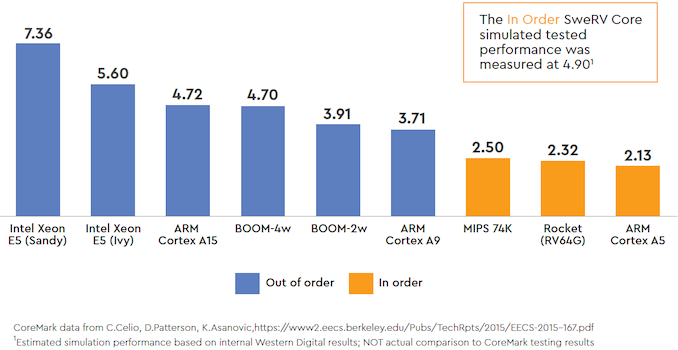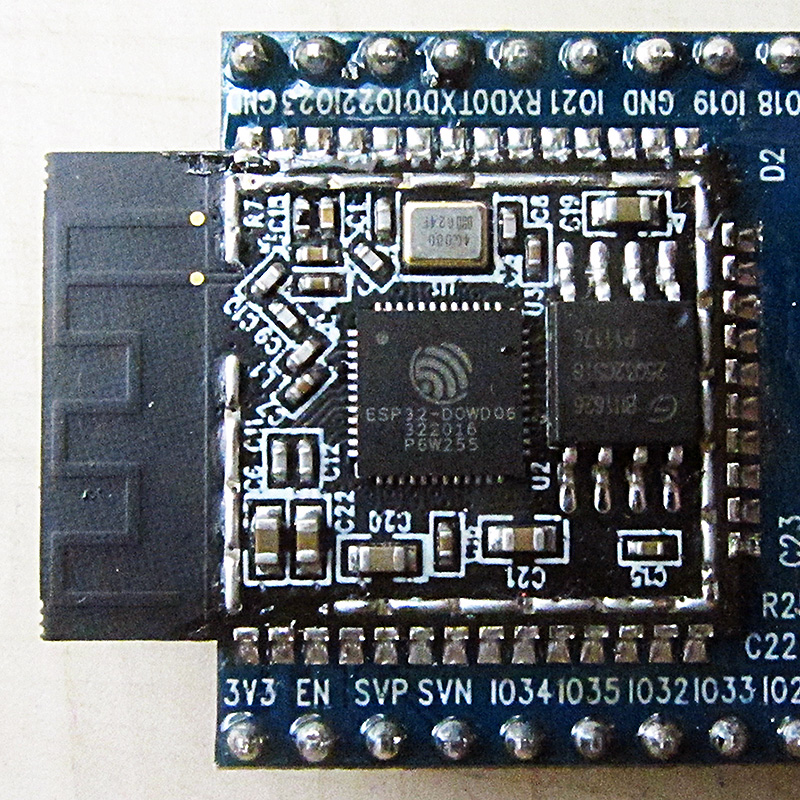Michael You missed to reference the actual benchmark numbers in WesternDigitals blog!
> The Western Digital SweRV Core™ EHX1 is a 32-bit, 2-way superscalar, 9 stage pipeline core. With an expected simulation performance of up to 4.9 CoreMarks/Mhz
After googling some I found that previous RISC-V chips have:
- Berkeley BOOM prototype (2015): 3.91 CoreMarks/MHz
- Freedom U500 (unreleased): 2.75 CoreMark/MHz?
- Freedom F31 (late 2017): 3.1 CoreMark/Mhz
So 4.9 CoreMarks/Mhz is an incredible improvement over the Rocket/Boom designs it seems!
Since it will be up to 1.8Ghz and built on a 28nm process node (same as BOOM) this will easily take the throne as the fastest RISC-V chip ever made. (As far as I know , BOOM was previously the most powerful RISC-V chip ever made, correct me if I'm wrong).
> The Western Digital SweRV Core™ EHX1 is a 32-bit, 2-way superscalar, 9 stage pipeline core. With an expected simulation performance of up to 4.9 CoreMarks/Mhz
After googling some I found that previous RISC-V chips have:
- Berkeley BOOM prototype (2015): 3.91 CoreMarks/MHz
- Freedom U500 (unreleased): 2.75 CoreMark/MHz?
- Freedom F31 (late 2017): 3.1 CoreMark/Mhz
So 4.9 CoreMarks/Mhz is an incredible improvement over the Rocket/Boom designs it seems!
Since it will be up to 1.8Ghz and built on a 28nm process node (same as BOOM) this will easily take the throne as the fastest RISC-V chip ever made. (As far as I know , BOOM was previously the most powerful RISC-V chip ever made, correct me if I'm wrong).



Comment